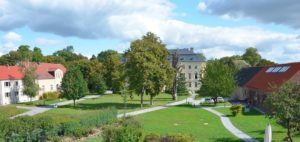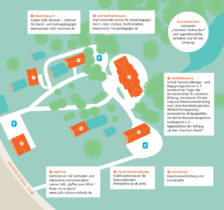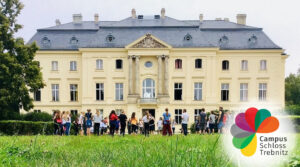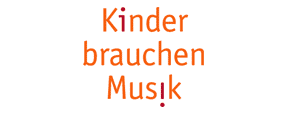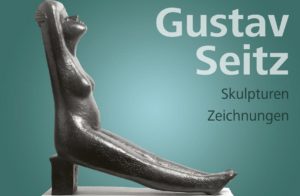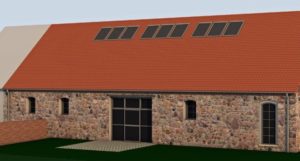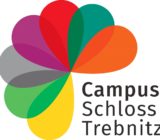 Campus Schloss Trebnitz – a lively place for the region
Campus Schloss Trebnitz – a lively place for the region
Adolescents from Belarus, curative education students from Switzerland, art enthusiasts from Berlin and villagers – they all meet here. As the connection on the “Campus Schloss Trebnitz” of regional commitment with the activities of all resident institutions in the areas of international exchange, extracurricular education, adult education, art and science succeeds.
Audioguide
Enjoy a walk around the Trebnitz Castle campus and a visit to the Gustav Seitz Museum. Thanks to the new free audio guide, you can design your own tour (duration approx. 45 min). Let the voice of the well-known singer-songwriter Rolf Zuckowski guide and teach you interesting facts about Gustav Seitz.
The audio guide can be found here (Guidemate) >>
The audio guide and image film were created as part of the project “Lernort SeitzMuseum”, funded by the Federal Ministry of Food and Agriculture based on a resolution of the German Bundestag.
Below you will find more detailed information about all the resident organizations and institutions. The numbering corresponds to that of the site plan.
Please click on the map to enlarge it.
1. Gustav Seitz Museum – Centre for Art and Cultural Education
(Washhouse)
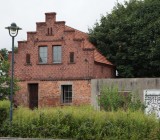
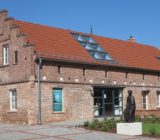 The former washhouse was renovated by Schloß Trebnitz Bildungs- und Begegnungszentrum e. V. and made available to the Gustav Seitz Foundation.
The former washhouse was renovated by Schloß Trebnitz Bildungs- und Begegnungszentrum e. V. and made available to the Gustav Seitz Foundation.
In the fall of 2017, the Gustav Seitz Foundation opened a new museum for the artistic estate of the well-known sculptor (e.g. Käthe Kollwitz Monument on the square of the same name in Berlin-Prenzlauer Berg) and draftsman. In the permanent public exhibition, a representative selection of the artist’s sculptural work is permanently on display. In cooperation with the educational and meeting centre Schloß Trebnitz, courses for families and children from the region, German-Polish artist plein-airs and regular guided tours are jointly developed and offered.
More information at www.gustav-seitz-museum.de
2. International Curative Education Archive | Emil E. Kobi Institute
(Inspector’s House)
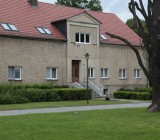
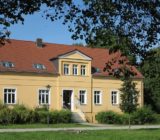 In 2013, the International Curative Education Archive established itself in the former Inspector’s House. It documents the history of dealing with and helping people with disabilities. The affiliated Emil E. Kobi Institute provides the scientific framework with regard to the evaluation of existing archive material and the publication of research results on historical and current issues in the field of curative education. More information at www.archiv-heilpaedagogik.de
In 2013, the International Curative Education Archive established itself in the former Inspector’s House. It documents the history of dealing with and helping people with disabilities. The affiliated Emil E. Kobi Institute provides the scientific framework with regard to the evaluation of existing archive material and the publication of research results on historical and current issues in the field of curative education. More information at www.archiv-heilpaedagogik.de
3. Schloß Trebnitz Bildungs- und Begegnungszentrum e. V.
(manor house/castle)
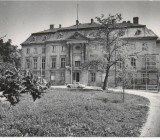
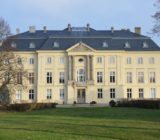 After the war the Castle Trebnitz was used as a military hospital, school, vacation camp and residential house, and therefore extensively renovated after 1992 by the Schloß Trebnitz Bildungs- und Begegnungszentrum e.V. and further developed into an international meeting place.
After the war the Castle Trebnitz was used as a military hospital, school, vacation camp and residential house, and therefore extensively renovated after 1992 by the Schloß Trebnitz Bildungs- und Begegnungszentrum e.V. and further developed into an international meeting place.
Since then, the association has been supporting political and cultural education – especially of children and young people – on both sides of the Oder River with training and educational programs, thus promoting exchange between Germany and Poland. For this work, the Education and Meeting Centre was awarded the German-Polish Prize in 2014, the most important award of both countries in the field of German-Polish communication. Since September 2016, the association is the partnership representative of the state of Brandenburg for Wielkopolska / Greater Poland.
4. Adult education / home education centre and accommodation
(Old Forge)
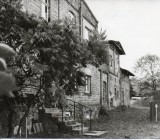
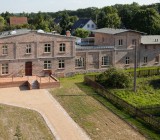 From 2011 to 2013, the former forge and dairy were extensively renovated together with the district of Gorzów (Poland) as project partner. The one- and two-story exposed brick building with a fieldstone base now has 20 single and double rooms, most of which are accessible for people with handicaps, as well as additional seminar rooms. Since June 1, 2018, the “Heimbildungsstätte des Schloß Trebnitz e.V.” has been located here.
From 2011 to 2013, the former forge and dairy were extensively renovated together with the district of Gorzów (Poland) as project partner. The one- and two-story exposed brick building with a fieldstone base now has 20 single and double rooms, most of which are accessible for people with handicaps, as well as additional seminar rooms. Since June 1, 2018, the “Heimbildungsstätte des Schloß Trebnitz e.V.” has been located here.
5. Multifunctional Hall (Fieldstone barn)
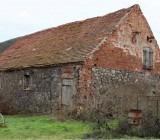
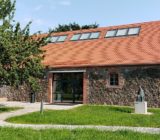 The old fieldstone barn was used as a horse stable and granary until 1945. It now houses a large multifunctional event space for a maximum of 200 people, which is available for concerts, meetings, and conferences as well as for exhibitions and seminars of fine arts.
The old fieldstone barn was used as a horse stable and granary until 1945. It now houses a large multifunctional event space for a maximum of 200 people, which is available for concerts, meetings, and conferences as well as for exhibitions and seminars of fine arts.
6. Village centre with a store, community rooms and junior café “Kaffee zum Glück” (coffee to happiness)
(Coach house)
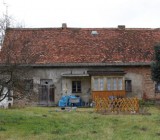
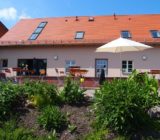 The coach house, located at the entrance to the chateau driveway, served as a horse stable and a shelter for the inspector’s carriage in estate times. Badly damaged during the Second World War, it was later rebuilt as a residential house and used for many years.
The coach house, located at the entrance to the chateau driveway, served as a horse stable and a shelter for the inspector’s carriage in estate times. Badly damaged during the Second World War, it was later rebuilt as a residential house and used for many years.
Today the Trebnitz village centre is located here. The village store offers next to articles of daily use especially regional products. On weekdays you will be offered a lunch snack. The village store is run with the help of many volunteers. The premises are also used by local groups and initiatives as event and meeting rooms.
The international inclusive junior café “Kaffee zum Glück” has been offering coffee and homemade cakes every weekend in season since 2012.
Historical castle park
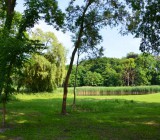
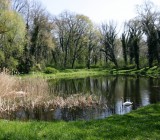 Adjacent to the estate is a 27-hectare historical park in the English style with a beautiful stock of trees, spacious meadows, a ramified network of paths as well as two ponds and a memorial grove for the fallen of the First World War.
Adjacent to the estate is a 27-hectare historical park in the English style with a beautiful stock of trees, spacious meadows, a ramified network of paths as well as two ponds and a memorial grove for the fallen of the First World War.




